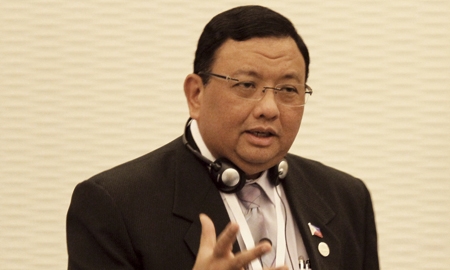With demand for power growing but supply tight and prices high, the Aquino administration knows that economic growth and national prosperity rests on the future development of the energy sector.
The 2009-2030 Philippine Energy Plan (PEP) is the government’s blueprint for energy development over the next two decades. It sees conventional fuels like oil, gas and coal remaining “indispensable”, and development of those sources being accelerated. But, at the same time, alternative sources of energy will also be developed.
Energy Secretary Jose Rene Almendras says the challenge is to work out the energy mix that will be right for the country five years from now and 15, 20 and 25 years into the future. “The energy mix is not static, it is dynamic. What is true for today will no longer be applicable in five years, or will be absolutely destructive in 10 years.”
Areas for exploration and development of oil, gas and coal are being offered up for bidding in an ongoing series of Philippine Energy Contract Rounds (PECRs). Through these, it is hoped to provide the country with the means to be energy self-sufficient.
The government expects $7.5 billion in investments to flow from the latest energy contract round (PECR4), in which 15 oil and gas exploration blocks have been offered up for bidding, covering a total area of approximately 62,347 square miles.
The production level target for oil and gas for 2030 is 78.59 million barrels, 2,694 trillion cubic feet of gas and condensate of 87.58 million barrels. The number of service contracts – currently totalling around 50 – is expected to increase to 117 by 2030. If the targets are met, hydrocarbon resources will increase by 40 per cent within the planning period.
Mr Almendras believes natural gas will become a major component in the energy mix.
“As hydrocarbon supply starts going down, with 50, 75, 125 years left, we are now seeing natural gas on the upswing. I personally believe there is a lot more gas than oil in our area. Knowing that we are going to use natural gas as a major component for our energy mix five to 10 years from now, we need to build the infrastructure,” he says.
“The energy mix is not static, it is dynamic. What is true for today will no longer be applicable in five years, or will be absolutely destructive in 10 years.” Jose Rene Almendras, Secretary of Energy |
The opening of bidding for 38 coal blocks under PECR4 earlier this year prompted an “overwhelming” response from would-be investors. Coal production is expected to increase by up to 250 percent, as new companies come into the sector and existing coal operating contracts move from exploration to development.
The Philippines currently imports around 7 million tons of coal a year, around 75 per cent of its domestic requirement; over the next 20 years, coal is expected to remain the major fuel for power generation.
Nearly 39 per cent of the Philippines' energy requirements are derived from renewable sources such as hydropower, geothermal, solar, wind and biomass. The Energy Secretary wants to increase the renewable energy generation share to at least 50% by 2020.
“We are looking at about 760 MW from renewables: 250 from biomass, 250 from mini-hydro, 200 from wind and 50 from solar,” says Mr Almendras. “That is only up to 2015. Hopefully by that time, solar panels will become cheaper, more efficient and somebody will solve the problem of intermittency, either by megawatt energy storage facility or a way of somehow storing electricity during the day and then using it at night.”
The Philippines follows the US as the second highest producer of geothermal power in the world, with 1,904 MW of capacity online.
The Aquino administration is also aggressively promoting energy efficiency, aiming to achieve 10 per cent energy savings on the total annual demand of all economic sectors.
Affordable, reliable energy cannot be taken for granted in the Philippines. Almost a decade after the Electric Power Industry Reform Act (EPIRA), the industry is now dominated by a small group of private companies. However, electricity power rates are the highest in Asia, and undercapacity has led to frequent power outages particularly in Mindanao, the second largest island group.
The government says it needs time to solve the power crisis and to encourage businesses to build more power plants, after the long neglect of the power sector by previous administrations.
Erramon Aboitiz, President and Chief Executive Officer of Cebu-based energy company Aboitiz Power, says his firm plans P170 billion (£2.5 billion) in new investments in the power sector, particularly in Mindanao.
He welcomes the government’s move towards open access in the electricity market, expected to be implemented later this year, which will allow consumers to choose their electricity suppliers based on price. learly open access will make the market more competitive,” he says.

0 COMMENTS